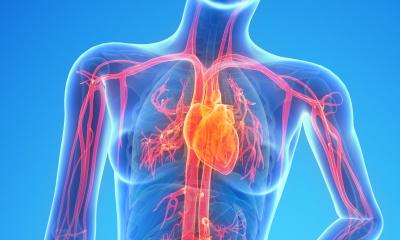When overweight kids become heart condition adults
A modern-day childhood totally differs from what was common just a few decades ago. It is mostly spent sitting -- at school desks, in front of TV screens or before computer monitors – all combined with the sweet temptations of the kid’s food industry. According to a WHO worldwide estimate, an estimated 10% of school-age children between five and 17 years old are overweight or obese. The consequences of abnormal or excessive fat accumulation are insulin resistance, high blood pressure and lipid metabolic disorder, which are all part of the same health-threatening clique: cardiometabolic syndrome. Childhood obesity is also associated with a higher chance of developing cardiovascular disease in adulthood.

During this year’s ESC* Dr Brian McCrindle, Professor of Paediatrics and Nutritional Sciences at the University of Toronto and Section Head of Clinical Epidemiology in the cardiology division at the Hospital for Sick Children, Toronto, Canada, will speak about the management of metabolic syndrome in children and its long-term effects on cardiac health in later life
There are, said Professor McCrindle, when asked whether cardiovascular diseases associated with overweight and obesity are already manifest in childhood, ‘early markers for increased risk of future cardiac events in obese kids, such as hypertension and increases in the left ventricular mass. What certainly is already present in the paediatric age group is cardiometabolic syndrome, which is not much different than in adults. These kids suffer from the typical pattern of lipid abnormalities, high blood pressure and Type 2 diabetes.
‘There is also evidence that the pathophysiologic process of adiposity and weight patterns during early childhood, or even in utero, may programme people to develop more cardiovascular problems in adulthood. In addition, longitudinal studies that have followed kids through to adulthood have clearly shown that three-quarters of overweight children become obese adults, and that this sets them up to be in the highest risk category in terms of cardiometabolic risk factors and vascular changes.’
Does cardiometabolic syndrome management differ between children and adults? ‘Yes. The roots of disordered and emotional eating often have their origins mainly in the paediatric age groups, but the reasons that are driving kids to become overweight and obese are different than in adults.
‘In kids, the problem is more driven by environmental factors. Direct marketing to kids of energy-dense food and sugary drinks, as well as the fact that certain extracurricular activities such as video games and computers are readily available within their home and school, makes it difficult to address the problem with a strictly behavioural solution. So, actually, changing the environment by working with the family and restricting the accessibility to these things within the school system may have higher chance of success.
Another problem is that a lot of families don’t recognise the issue of overweight and obesity. In addition, if a healthcare practitioner brings up the concept that their child might be overweight, the parents tend to bring up some negative push back. So, there’s a lot of opportunity for population-based education to get people to think of this as a problem and then also to equip healthcare professionals with the appropriate counselling skills.
‘In comparison to adults there are also developmental considerations, particularly regarding behavioural management strategies, because kids span a wide range of ages and abilities to comprehend what lifestyle changes might be necessary.’
So, what kind of management produces the best effects? ‘An ongoing issue in the field is that no single level intervention is going to have a significant benefit. In order to achieve a positive effect, interventions must be designed to be adaptive to the patient’s individual circumstances and also address environmental factors.
‘One of the most important aspects emerging in intervention is probably the role of motivational interviewing as a counselling strategy to achieve behavioural changes around lifestyle. This means abandoning prescriptive and didactic forms of communication and adopting a more client-based counselling form, whereby the patient determines the agenda and the interviewer is helping the patient to tap into their own intrinsic motivations for making behaviour changes.
‘I also do believe that the most effective strategy is to develop a population-based screening programme. For pre-schoolers, it can be integrated within routine primary healthcare. Once they are school-aged, the main environment where they can be screened is within the school system. However, this has to be backed up with a referral strategy so that if a child turns out to be obese and have cardiometabolic risk factors they get further assessment and management through the healthcare system. But, to realise this, governmental and public support are required to create a consciousness that cardiometabolic syndrome is a serious and fundamental health burden.’
* At ESC 2011 on 28 August, Prof. McCrindle will lecture during the session Childhood Obesity and Cardiometabolic disease: Prevention and management, running from 4.30 to 6 p.m. in the Lisbon Room – Zone D.
22.08.2011











